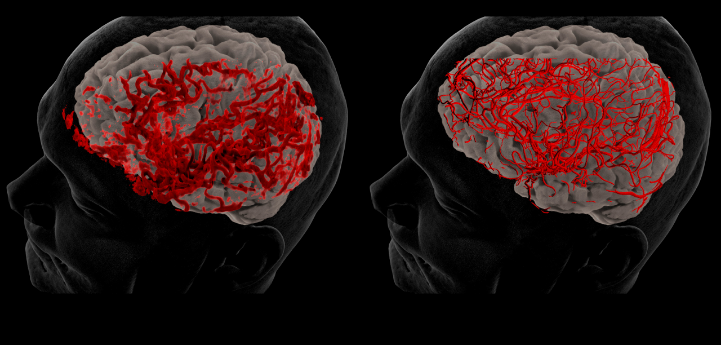
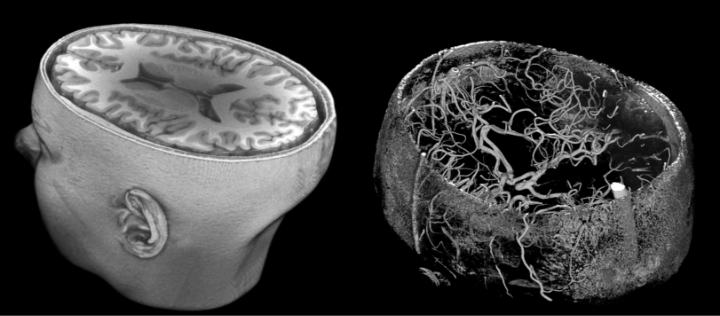
In our one-year USC Master of Science degree program, students attend lectures and perform hands-on activities that teach them to acquire brain MRI data on our Siemens 3T and 7T scanners, analyze multimodal brain imaging data, design neuroimaging studies, perform computational modeling, use animal model techniques, and more.
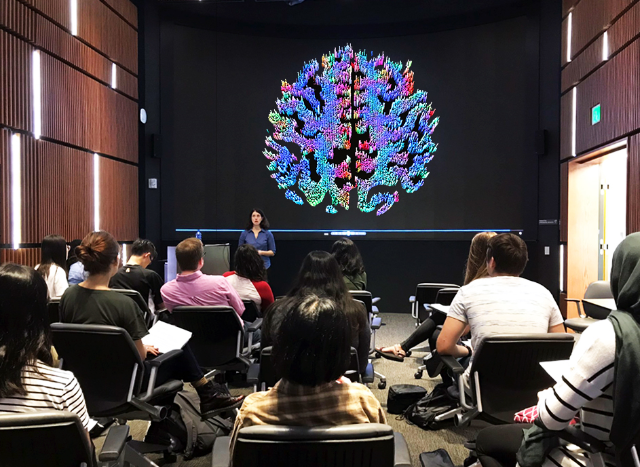
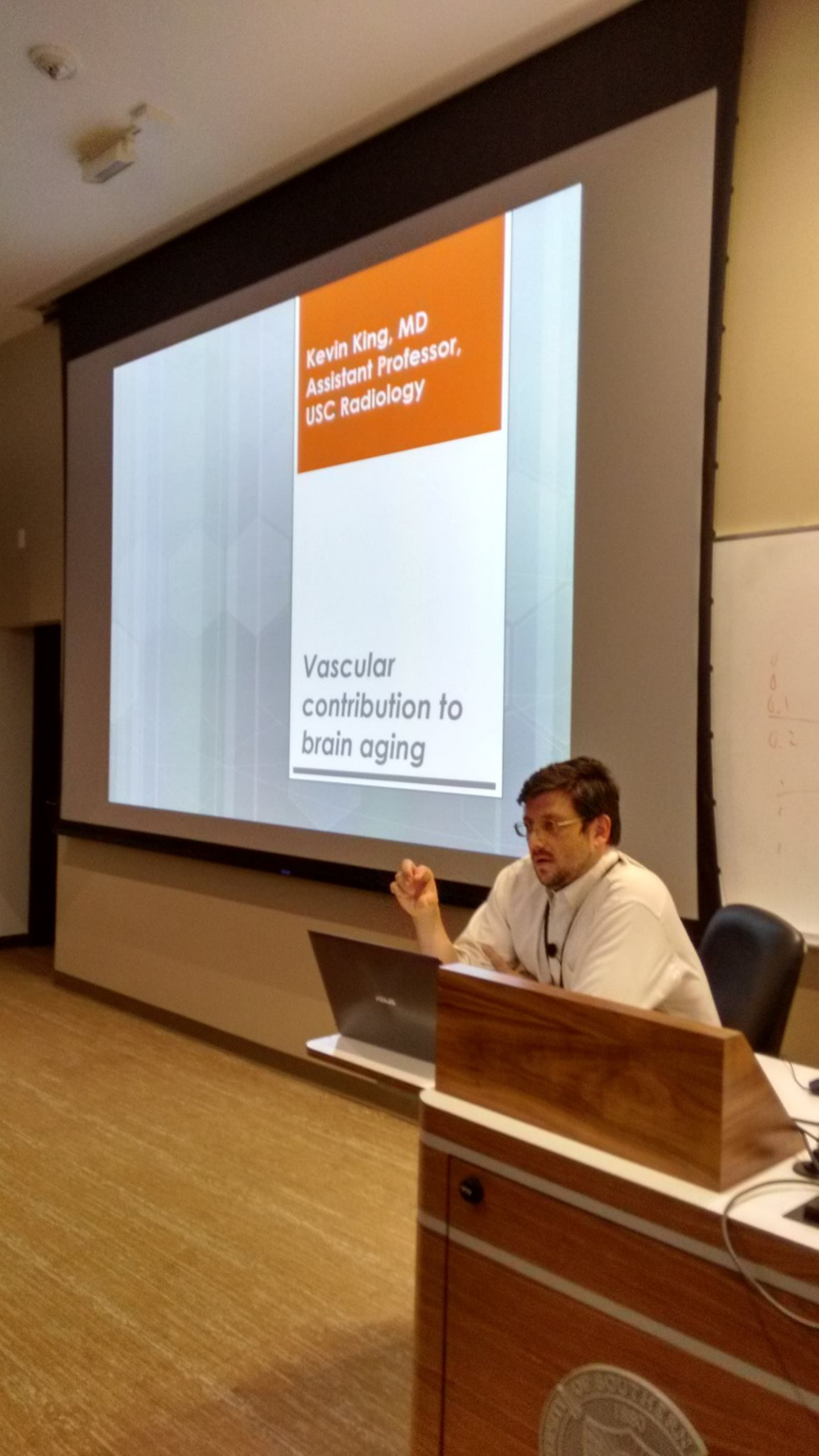
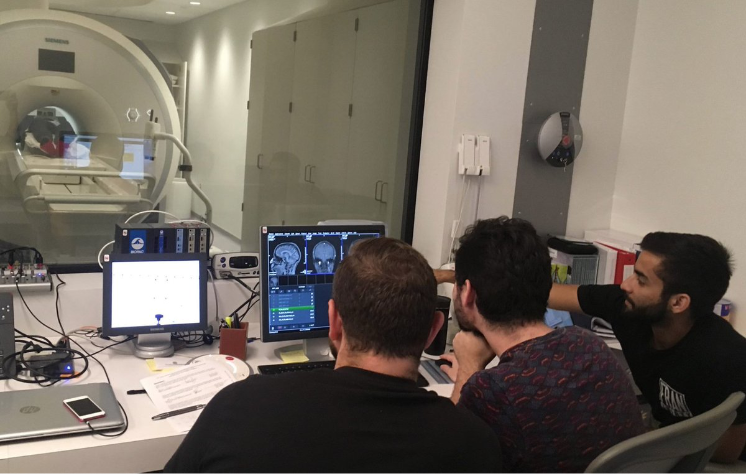
Courses on neuroanatomy, data processing, experimental design and other topics
Faculty-guided discussions about neuroimaging topics and exciting guest speakers.
Hands-on training in neuroimaging acquisition and analysis, computational processing, and neuroanatomy
Instructor: Lawrence
Credits: 3
This course will provide a detailed overview of elemental neuroanatomy and brain systems with an emphasis on a neuroimaging perspective in humans. Examples related to neurological conditions and their consequences on behavior will be explored.
Location: Hastings Auditorium in the Hoffman building at HSC
Instructor: Jann
Credits: 3
Survey of anatomical and functional neuroimaging approaches and their use to explore the healthy as well as diseased human brain.
Location: Hastings Auditorium in the Hoffman building at HSC
Instructors: Wang
Credits: 3
This course introduces the various approaches that can be used to image the living brain using MR-based techniques. The course covers neuroimaging scanning technologies, pulse sequence design, and sources of image artifact.
Location: Hastings Auditorium in the Hoffman building at HSC
Instructors: Kim, Jahanshad, and Nir
Credits: 3
A comprehensive investigation of data processing methods, software strategies, and workflow design and execution methodologies.
Location: Hastings Auditorium in the Hoffman building at HSC
Instructor: Salminen
Credits: 1
Leading researchers in the areas of basic and clinical brain imaging, computational methods, and informatics present lectures on their work to NIIN students, local USC faculty, and staff. NIIN students will offer their written comment and critique of these interactive presentations.
Location: Online
Instructors: Zhao
Credits: 3
An examination of study design approaches for experimental and clinical neuroimaging investigation. Topics include how to develop rigorous experiments to test theories of cognitive and clinical neuroscience.
Location: Hastings Auditorium in the Hoffman building at HSC
Instructor: Shi
Credits: 3
Lectures addressing the current neuroinformatics approaches to large-scale data representations, and mining in brain imaging. Applications in clinical samples will be presented and discussed.
Location: Hastings Auditorium in the Hoffman building at HSC
Instructor: Bienkowski
Credits: 3 (Elective)
Introduction to basic theories and methodological approaches to neuroanatomy in animal models including histology, microscopy, behavioral investigations, and neuroinformatics.
Location: Hastings Auditorium in the Hoffman building (lecture) & McKibben Addition 346 (lab) at HSC
Instructor: Braskie and Ching
Credits: 3
Lectures on human genetics and epigenetics. We discuss how applying these concepts to brain imaging advances our understanding of healthy development and neurological disease. The class emphasizes critical thinking applied both to designing neuroimaging genetics studies and to assessing neuroimaging genetics literature.
Location: Hastings Auditorium in the Hoffman building at HSC
Instructor:
Credits: 3 (Elective)
Students will learn the basics of data science as applied to neuroimaging data. Topics include neuroimaging data preparation and quality control, basics of programming, and statistical models and machine learning techniques appropriate for the analyses of neuroimaging data.
Location: McKibben Hall
Instructor: Salminen
Credits: 1
Students will learn writing and communication elements critical for success in science-related fields, including clear writing, effective presentations, and career development skills.
Location: Online
| Term | Course# | Credits | Mon | Tues | Wed | Thurs | Fri | Instructor |
|---|---|---|---|---|---|---|---|---|
| Fall | 500 | 3 | 9-10am | 9-11am | Lawrence | |||
| Fall | 510 | 3 | 10-11am | 1-3pm | Jann | |||
| Fall | 530 | 3 | 1-4pm | Wang | ||||
| Fall | 540 | 3 | 10-11am | 10-12pm | Jahanshad, Kim, and Nir | |||
| Fall | 597 | 1 | 12-1pm | Salminen | ||||
| Spring | 520 | 3 | 10-11am | 10-12pm | Zhao | |||
| Spring | 550 | 3 | 9-10am | 1-3pm | Shi | |||
| Spring | 560 | 3 | 9-10am | 10-12pm | Bienkowski | |||
| Spring | 570 | 3 | 10-11am | 1-3pm | Braskie and Ching | |||
| Spring | 580 | 3 | 9-10am | 10-12pm | Aksman | |||
| Spring | 600 | 1 | 12-1pm | Salminen |
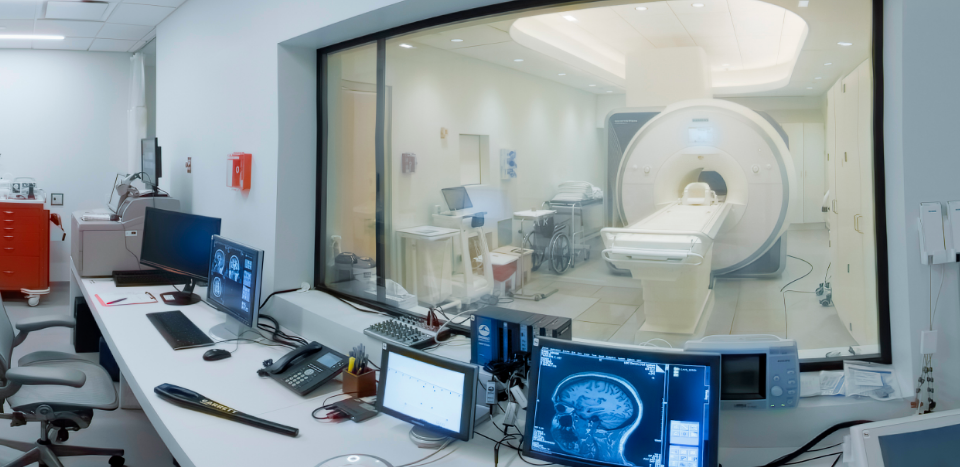

Students learn to scan on our in-house Magnetom Terra 7T and Prisma 3T MRI scanners
A data center currently housing data from more than 500,000 subjects on 6 continents
The INI's Center for Image Acquisition (CIA) employs cutting-edge scientific instruments and analytical approaches to optimize images of the living human brain. The powerful tools and techniques developed by the CIA team, which enable breakthroughs in both the lab and clinic, are perfected and shared with the larger scientific community.
The CIA houses two of the world’s most advanced MRI scanners, along with dedicated supercomputing systems, cutting-edge analysis techniques and unrivaled professional expertise. The Siemens Prisma 3T MRI scanner boasts a high-end gradient system ideal for clinical imaging studies; the INI’s Siemens Terra 7T MRI scanner was the first of its kind installed in North America and contains a powerful magnet that enables researchers to image the brain in ultra-high resolution.
To gain a more complete picture of brain health, biomedical researchers are simultaneously integrating behavioral, genetic, lifestyle and environmental factors into their neuroimaging studies. Understanding how these and other variables relate to imaging observations will provide critical insights into the brain’s role in human biology.
The USC Mark and Mary Stevens Neuroimaging and Informatics Institute houses four centers, each with its own specific research focus. View each center’s website to learn more.
Although independent research is not required for completion of the master’s program, the skills you will acquire through lectures and hands-on activities in the NIIN program will make you a valuable addition to neuroimaging laboratories.
Classes in the NIIN program are grouped together, providing students with blocks of time that can be used to gain valuable neuroimaging laboratory research experience that will greatly enhance future job prospects or PhD and medical program applications. Research opportunities range from methods-based neuroimaging research to a wide variety of disease-based or neuropsychological topics.
If you are interested in gaining supplementary research experience while completing the NIIN program, please contact the lab that interests you via email. Include your curriculum vitae (CV) and request to volunteer. Visit our faculty page for a list of NIIN faculty. Click here to search for a complete list of USC faculty with active neuroimaging studies.